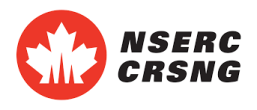Key words: computational models of choice, regulatory control, attention, altruism and cooperation, dietary success, consumer behaviour, socio-cognitive processes (empathy, mentalizing), multivariate pattern analyses (MVPA), neuroimaging (fMRI, sMRI), eye-tracking
Our lab studies human decision-making and how decisions are processed in the brain. We are particularly interested in understanding the processes that drive variance in decisions across people, contexts and time. Here are four primary questions of our research program:
 Social processes in choice
Social processes in choice
Human beings are inherently social and a considerable part of our thoughts, decisions, and behaviours concerns the people around us. We decide whether to behave altruistically or selfishly, whether to cooperate with others, or whom to trust when we invest our resources. We are interested how the presumably social processes of empathy or mentalizing shape behaviours that involve other people. How do we understand other people’s intentions, needs and feelings? How exactly do these processes contribute to the decision-process, yielding more – or less – altruistic, cooperative or trusting behaviours?
 One generic model of choice (?)
One generic model of choice (?)
In complex and constantly changing environments, we are faced with countless decisions and choice settings. Specialized codes in the brain for all possible types of scenarios seem inefficient. Yet lesion studies and psychopathological impairments hint at some level of specificity when the topic is social behaviour. What choice model accounts for commonalities and differences across choice domains (i.e. dietary vs. altruistic vs. investing behaviour)? In our research, we aim to identify components of the choice process that are…
- generic to the decision-process (e.g., related to self-control, attention, and valuation)
- specialized for the social domain (e.g., as presumed for empathy or mentalizing)
- and to understand their interaction.
 Making better choices
Making better choices
Many people face the dilemma that they want to make the “right” choice, but have trouble acting on their intention in the face of temptations. We aim to use predictions of the computational model of choice to develop interventions that increase “good” decision-making. We are especially interested in decisions that yield long-term benefits for the decision-maker and/or society at large (e.g. eat healthier, save for retirement, be kinder, consumer choices that are environmentally friendly).
Understanding the mechanisms and functionally distinct components of the decision process is a crucial prerequisite to study the malleability of behaviour. Here are some of the questions that we pursue: To what degree can we alter specific elements of the decision process, yielding more prosocial, healthy or sustainable behaviours? What are the most effective interventions to achieve this? How does it depend on characteristics of the decision-maker?
 Attention in choice
Attention in choice
Environments are noisy and rich in information, raising the intriguing question: what is the specific role of attention for guiding people’s behaviour and how does it affect the processes in the brain? Does the tendency to preferentially process some aspects in complex settings – where multiple features compete for our attention – shape our behaviours? To address this question, we use a novel feature-based saliency model of gaze behaviour (assessed using eye-tracking). It allows quantifying attention to specific social and non-social features in complex natural scenes and to predict individual differences in behaviour. Wearable, mobile eye-tracking systems allow testing the predictive features of the computational saliency model using more ecologically valid assessments of gaze and behaviour outside of the lab. Complementary neuroimaging data test the potential mediating role of social cognition (e.g. empathy or mentalizing elicited by social features) between early perceptual biases and social behaviour.
To address these questions, the lab uses a highly interdisciplinary approach. Specifically, I draw on methods and insights from different disciplines, including psychology, neuroscience (especially functional magnetic resonance imaging, fMRI), computational modelling (e.g. multivariate decoding techniques or drift-diffusion models), and behavioural economics.
Funding
The lab’s work is currently funded by:







You must be logged in to post a comment.